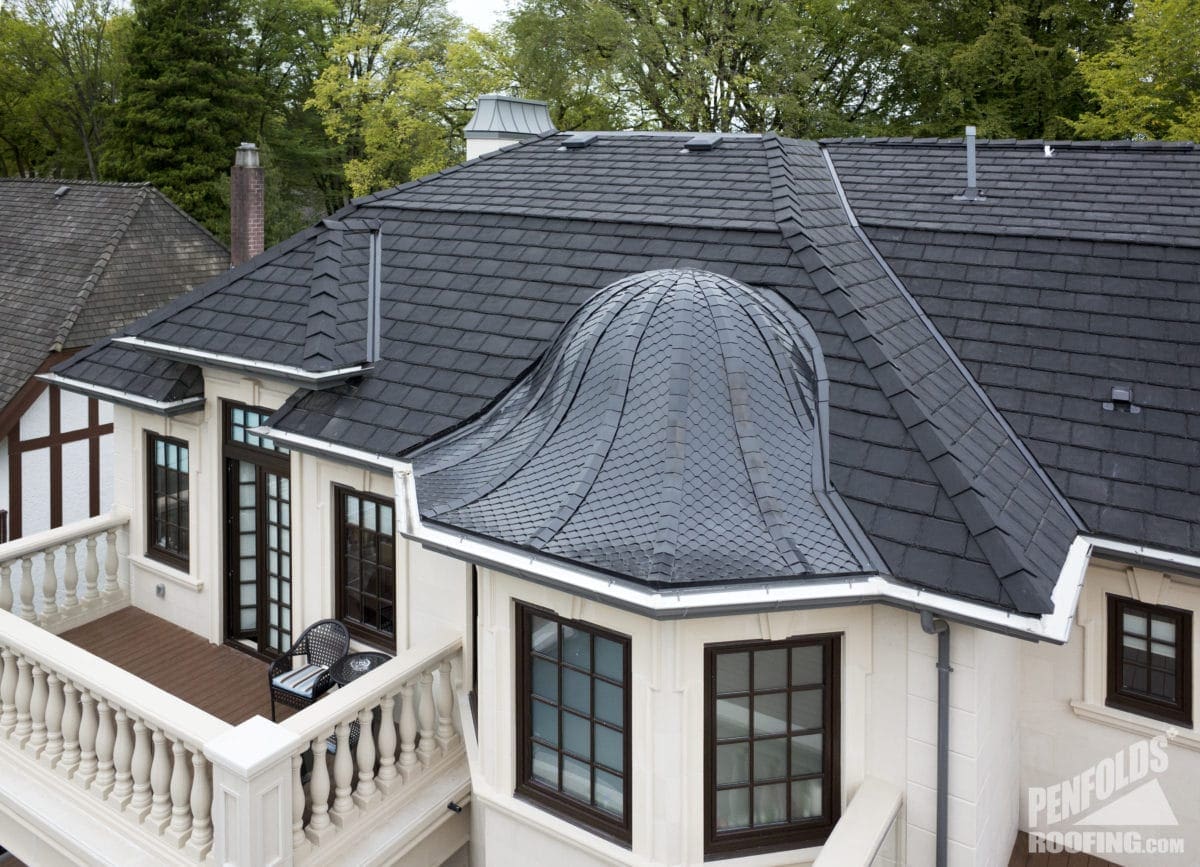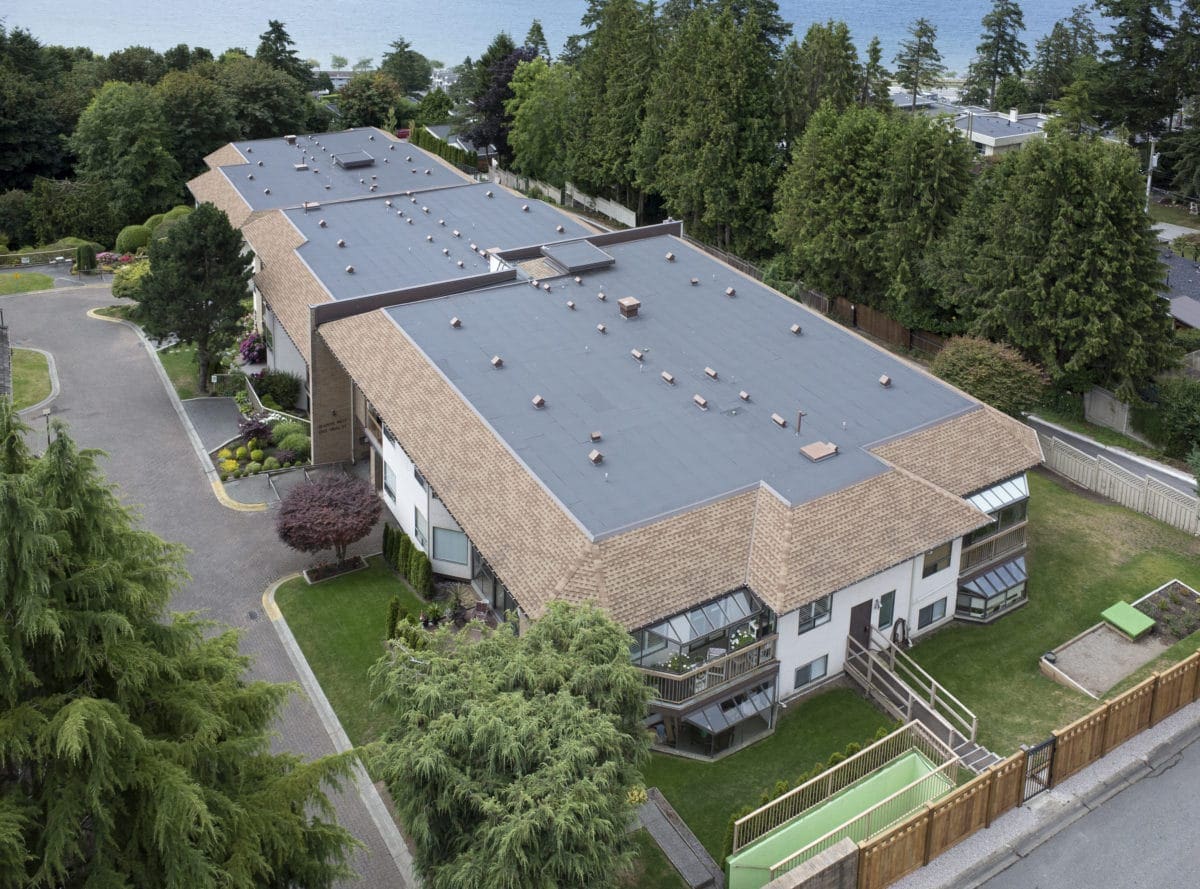How does membrane roofing apply to Vancouver?
Membrane roofing is a system of roofing used for flat or nearly flat roofs. Typically it is used on roofs with less than a 14-degree slope. Here on the west coast of British Columbia, it’s a really good question as to why anyone would construct a building with a flat roof. Vancouver has an average annual precipitation of 1199 millimetres, after all. The optimal roof for a building in Vancouver is one that will facilitate rainwater drainage.
The fact of the matter is that there are many building in the Lower Mainland that uses flat roofing. Traditionally the roofing system used has been tar and gravel roofing systems or asphalt. This type of roofing can be loosely considered a membrane roofing system but it does have some disadvantages. In Vancouver, we can experience freezing temperatures in the winter and this can damage the tar and gravel roofing system. Ice dams can form and this can prohibit water from flowing off the roof. Pooling water can lead to sagging which then leads to poor drainage overall.
Membrane roofing is an ideal solution for flat or nearly flat roofing systems. The membrane roofing is applied to the entire surface area and sealed to form a seamless barrier that prevents water from leaking in and helps to move water to drainage ports. Membrane roofing is made of a variety of synthetic materials. Commonly the roofing system is made of synthetic rubber, thermoplastic or modified bitumen.
Types of membrane roofing
Synthetic rubber, also referred to as Thermoplastic, is a type of membrane roofing system that uses flat pieces of synthetic rubber. The ‘strips’ are welded together to create one large seamless membrane.
Thermoplastic membranes are like synthetic rubber. The difference is that the seams of the roofing membrane overlap and they are bonded together by either melting or dissolving the membrane. The bonding process creates a seam that is as strong as the rest of the membrane roofing.
Modified bitumen is a type of roof that really evolved from the traditional asphalt roofing system. The seams are joined together in a variety of ways. Heat is used to melt the asphalt and form a seal, a cold application can be used and there are several self-adhesive systems.
Membrane roofing has many advantages over asphalt roofing. Membrane roofing is far easier to create a perfect seal and a truly continuous membrane. All membrane roofing systems include properties that allow for expansion and contraction and UV resistance. With membrane roofing systems seams do not exist or are very strong. When the roofing system experiences expansion or contraction the roof does not form leaks or cracks in the membrane.
Our membrane roofing system, PenMax® Flat Roofing, forms a seamless barrier to prevent water entry at any point. It uses a patented polyester felt which lengthens life-span. PenMax® Flat Roofing has the capacity to expand and contract and offers up to a 30 year warranty.


